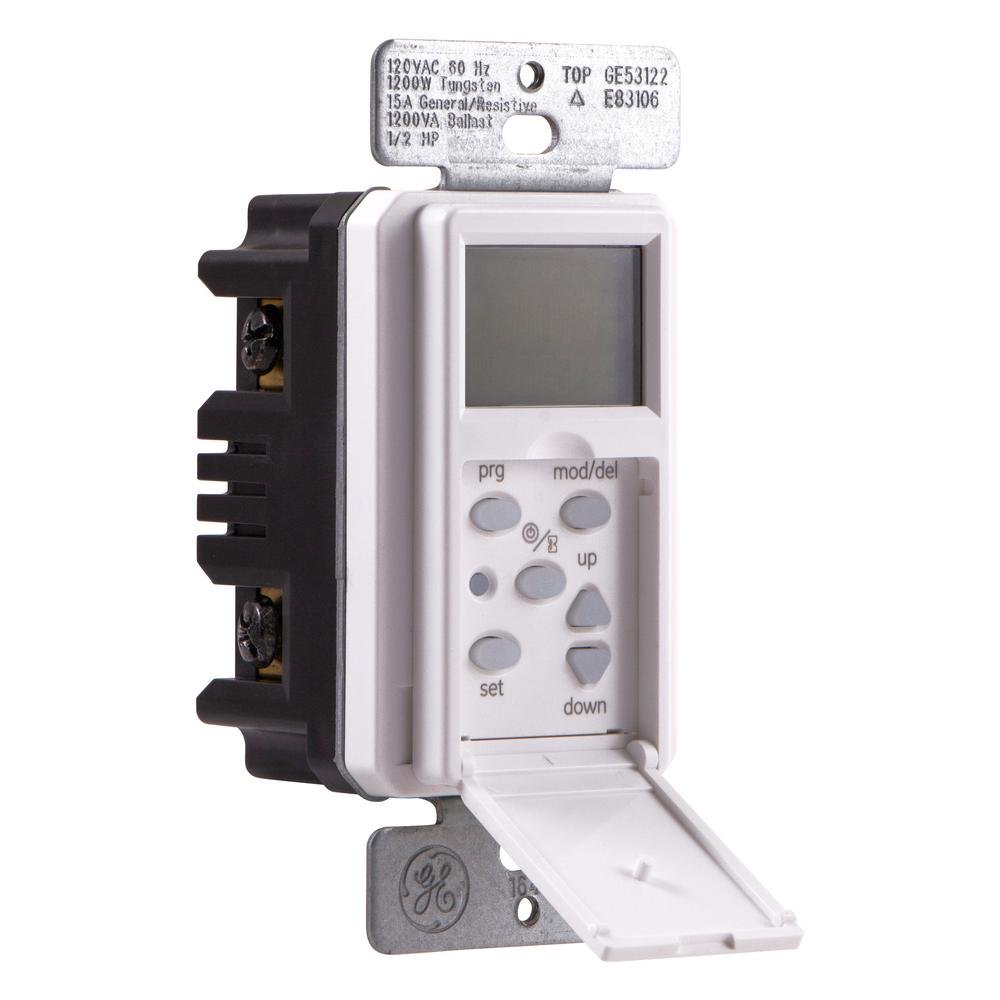


#GE SMART TIMER 15071 DRIVER#
An everyday example is the cruise control on a road vehicle where external influences such as hills would cause speed changes, and the driver has the ability to alter the desired set speed.

In the case of linear feedback systems, a control loop including sensors, control algorithms, and actuators is arranged in an attempt to regulate a variable at a setpoint (SP). Its name comes from the information path in the system: process inputs (e.g., voltage applied to an electric motor) have an effect on the process outputs (e.g., speed or torque of the motor), which is measured with sensors and processed by the controller the result (the control signal) is "fed back" as input to the process, closing the loop. Likewise "A Feedback Control System is a system which tends to maintain a prescribed relationship of one system variable to another by comparing functions of these variables and using the difference as a means of control." Feedback control systems Įxample of a single industrial control loop showing continuously modulated control of process flow.Ī closed-loop controller or feedback controller is a control loop which incorporates feedback, in contrast to a open-loop controller or non-feedback controller.Ī closed-loop controller uses feedback to control states or outputs of a dynamical system. The definition of a closed loop control system according to the British Standard Institution is "a control system possessing monitoring feedback, the deviation signal formed as a result of this feedback being used to control the action of a final control element in such a way as to tend to reduce the deviation to zero." For this reason, closed loop controllers are also called feedback controllers. A closed loop controller therefore has a feedback loop which ensures the controller exerts a control action to give a process output the same as the "reference input" or "set point". In the case of the boiler analogy this would include a thermostat to monitor the building temperature, and thereby feed back a signal to ensure the controller maintains the building at the temperature set on the thermostat. In closed loop control, the control action from the controller is dependent on the process output. The control action is the switching on/off of the boiler, but the controlled variable should be the building temperature, but is not because this is open-loop control of the boiler, which does not give closed-loop control of the temperature. A good example of this is a central heating boiler controlled only by a timer, so that heat is applied for a constant time, regardless of the temperature of the building. In open-loop control, the control action from the controller is independent of the "process output" (or "controlled process variable"). Open-loop and closed-loop control Īn electromechanical timer, normally used for open-loop control based purely on a timing sequence, with no feedback from the process.įundamentally, there are two types of control loop: open-loop control (feedforward), and closed-loop control (feedback).
#GE SMART TIMER 15071 SOFTWARE#
The control system compares the value or status of the process variable (PV) being controlled with the desired value or setpoint (SP), and applies the difference as a control signal to bring the process variable output of the plant to the same value as the setpoint.įor sequential and combinational logic, software logic, such as in a programmable logic controller, is used. The control systems are designed via control engineering process.įor continuously modulated control, a feedback controller is used to automatically control a process or operation. It can range from a single home heating controller using a thermostat controlling a domestic boiler to large industrial control systems which are used for controlling processes or machines. The centrifugal governor is an early proportional control mechanism.Ī control system manages, commands, directs, or regulates the behavior of other devices or systems using control loops.


 0 kommentar(er)
0 kommentar(er)
